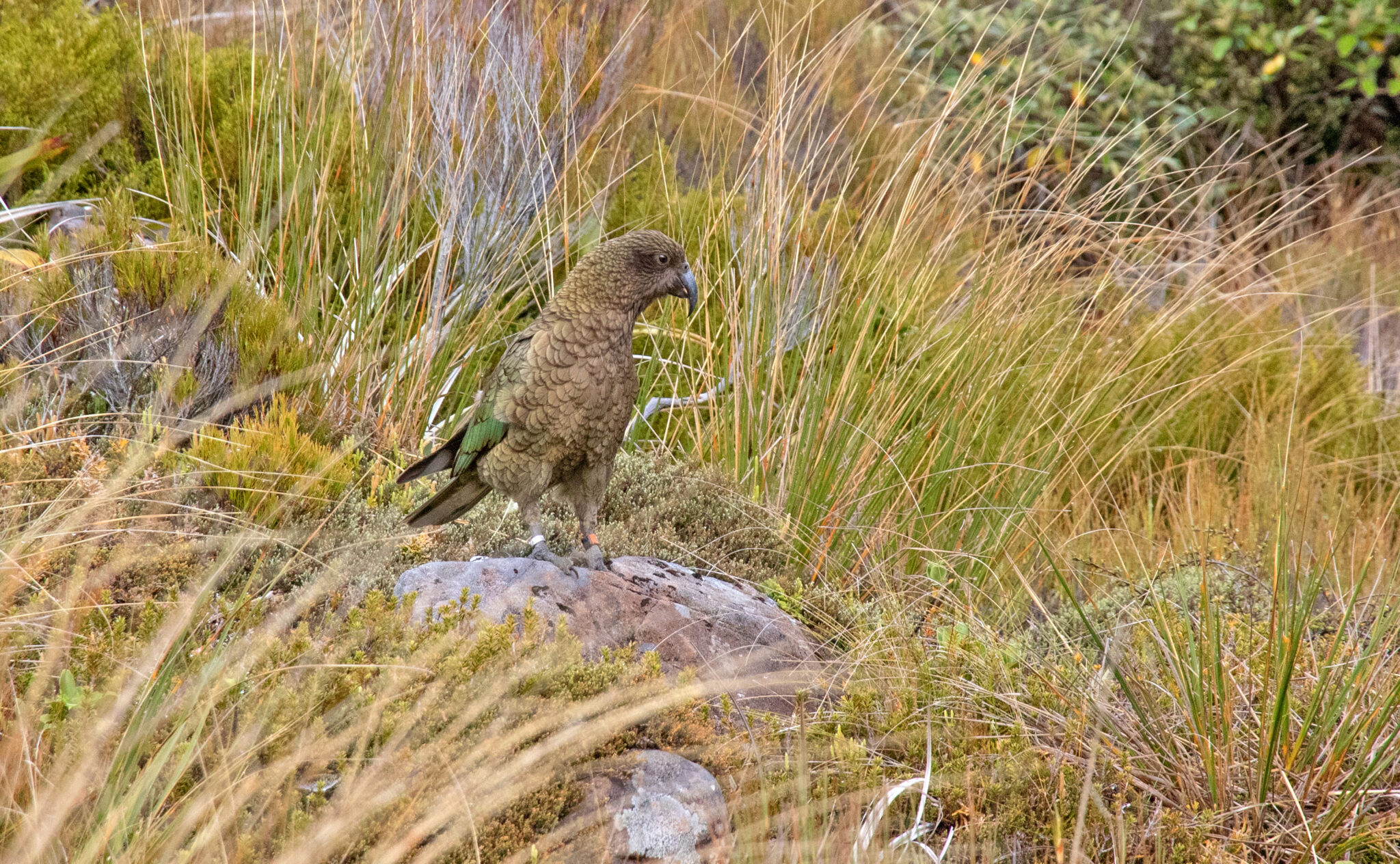Threats and conservation
Bounty hunting of kea as a measure to protect sheep was outlawed in 1971, and full protection was finally granted in 1986.
Contemporary threats include introduced mammalian predators, environmental lead, and conflict and accidents with humans and their equipment. Episodic, semi-catastrophic mortality events are thought to be associated with plagues of stoats which ensue after mast seeding of beech and rimu. Ironically, kea are also killed accidentally in possum traps and by poison baits deployed to control predators. Predator control has been associated with substantial increases in nest survival and therefore in recruitment of young birds. The conservation status of this species was changed from naturally uncommon to nationally endangered in 2013.
Breeding
Kea nest mainly below the tree line, on the ground in natural cavities such as a rock crevice, the hollow base of a large tree, a hollow under the roots of a tree, a hollow log or a dirt cavity under the lip of an old river terrace. The usually 4 eggs are laid July to January (peak laying in August-October). Incubation takes 22-24 days, and chicks stay in the nest for 3 months. The female does all the incubation, brooding and feeding the young by regurgitation. The male brings food to the female, feeding her by regurgitation near the nest site. Fledging peaks in December-February, with an average of 1.6 fledglings per nest
Normally one clutch is laid per year. An individual female may nest in several successive years, but not all females nest every year.
I spotted this Kea in a mountainous region in a valley amongst tussock grass

Thanks for all the information about the Kea. I’ll share it with everyone in a week or so.